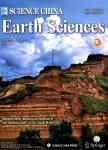Ostracod fauna across the Permian-Triassic boundary at Chongyang, Hubei Province, and its implication for the process of the mass extinction
Ostracod fauna across the Permian-Triassic boundary at Chongyang, Hubei Province, and its implication for the process of the mass extinction作者机构:Key Laboratory of Biogeology and Environmental Geology of Ministry of Education Wuhan China State Key Laboratory of Geological Processes and Mineral Resources Wuhan China
出 版 物:《Science China Earth Sciences》 (中国科学(地球科学英文版))
年 卷 期:2010年第53卷第6期
页 面:810-817页
核心收录:
学科分类:070903[理学-古生物学与地层学(含:古人类学)] 0709[理学-地质学] 07[理学] 0708[理学-地球物理学] 0704[理学-天文学]
基 金:supported by National Natural Science Foundation of China (Grant Nos. 40730209, 40830212, 40572002) "111 Project" (Grant No. B08030)
主 题:ostracod microbialite Permian-Triassic mass extinction Chongyang
摘 要:Thirty species of 10 ostracod genera were identified from 440 fossil specimens isolated through the hot acetolysis of the rock samples collected across the Permian-Triassic boundary at Chongyang section. Twenty species of 6 genera are found to occur in the limestone of Changxing Formation, and 11 species of 7 genera above the main faunal mass extinction horizon. The os-tracod assemblages identified at the Chongyang section are obviously different from those previously reported in the contem-poraneous microbialites in Guangxi and Chongqing regions, not only in the ostracod components but also in the abundance of filter-feeding ostracods relative to the deposit-feeding ostracods, an indicator of the oxygen level of the seawater. This spatial difference in ostracod assemblages might reflect the diversity of oceanic environmental conditions after the end-Permian mass extinction. Ostracods disappear at 200 cm below and near the main mass extinction horizon, and on the top of the microbialites, respectively, showing an episodic and gradual collapse process at the Chongyang section. The carbon isotope composition is found to appear at 200 cm below the main mass extinction horizon, indicating the initial deterioration of oceanic environment. Fluctuation of the carbon isotope composition is obviously related with the episodic evolution of ostracod species, but not with the abundance of ostracods.



